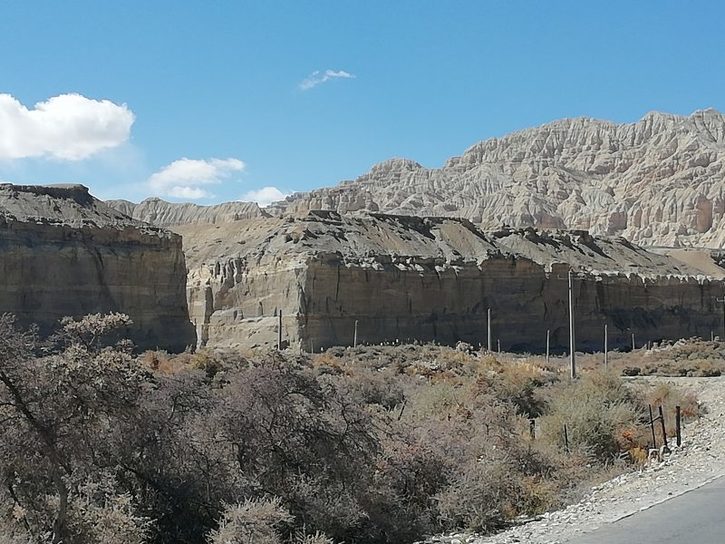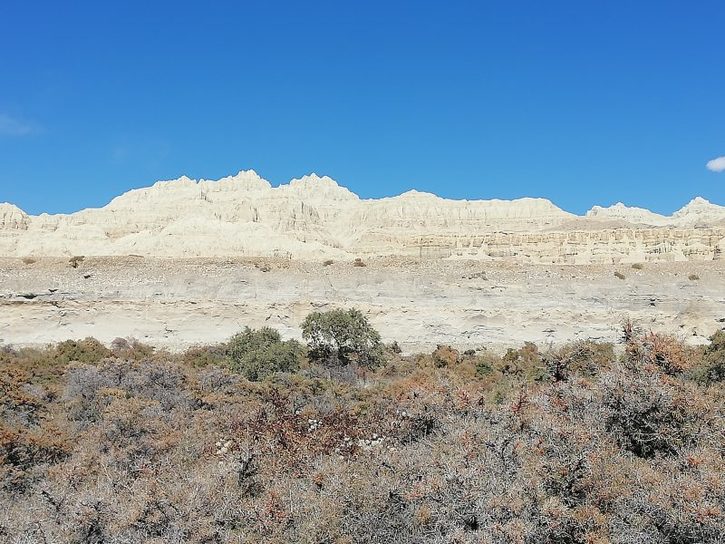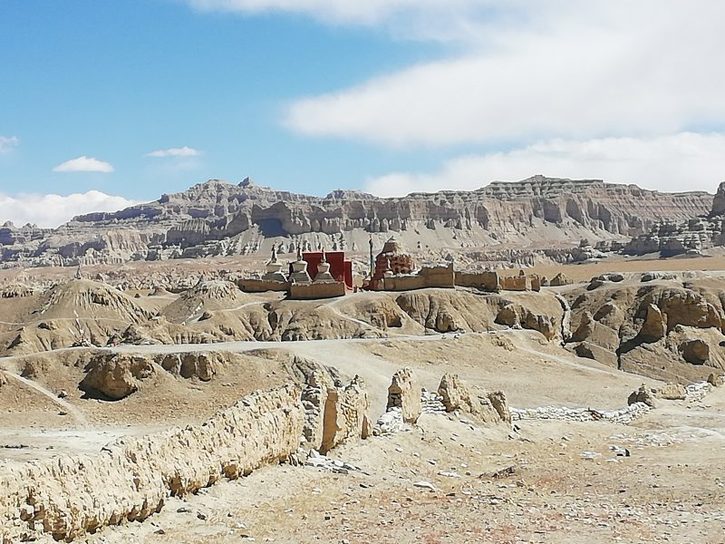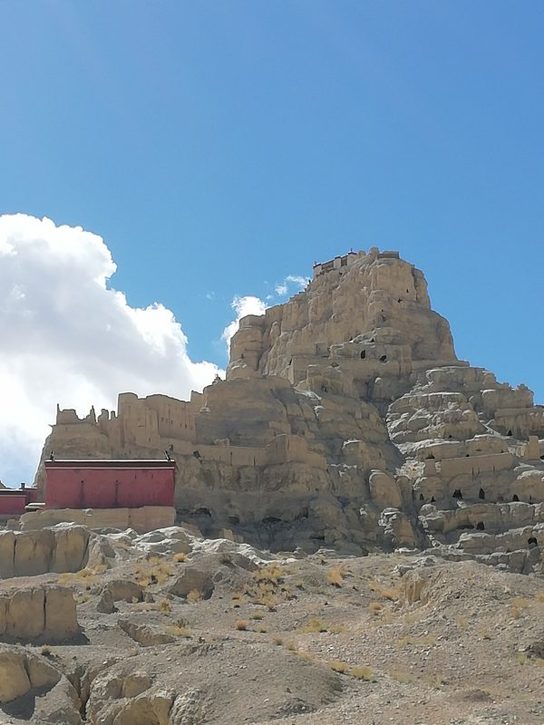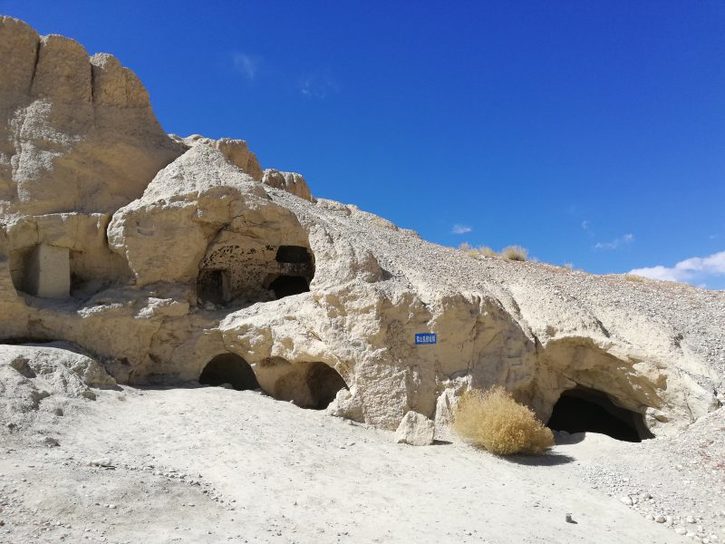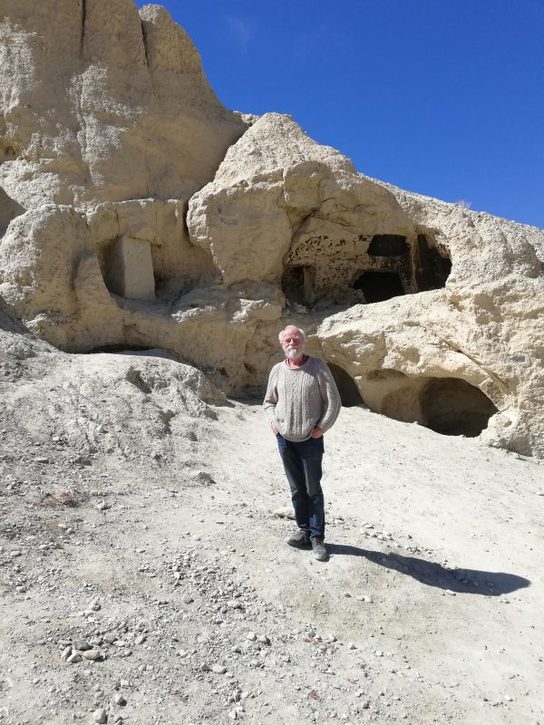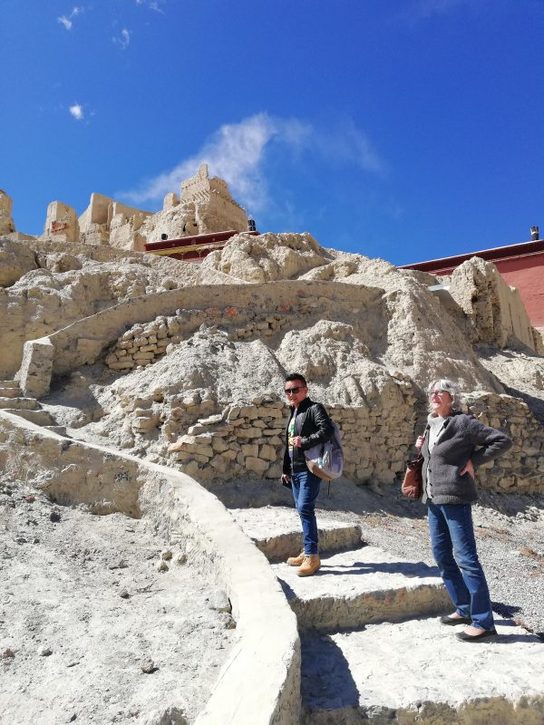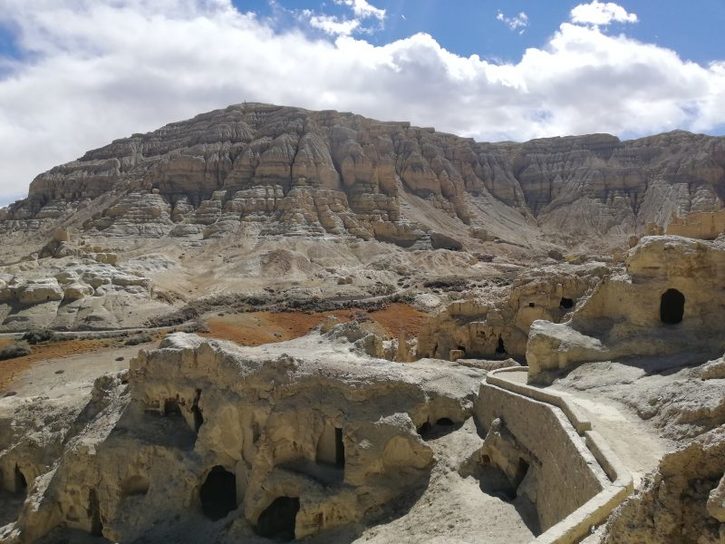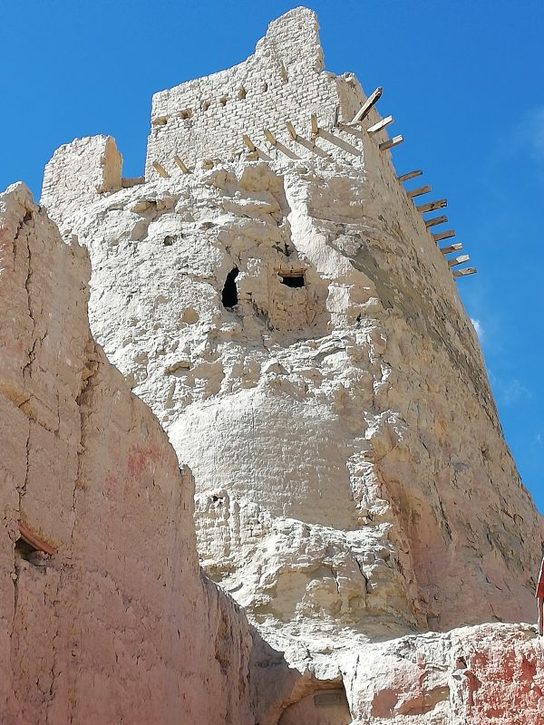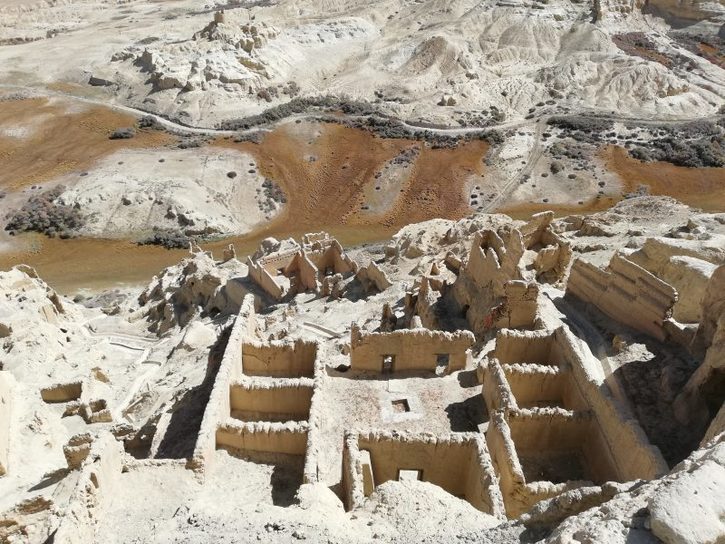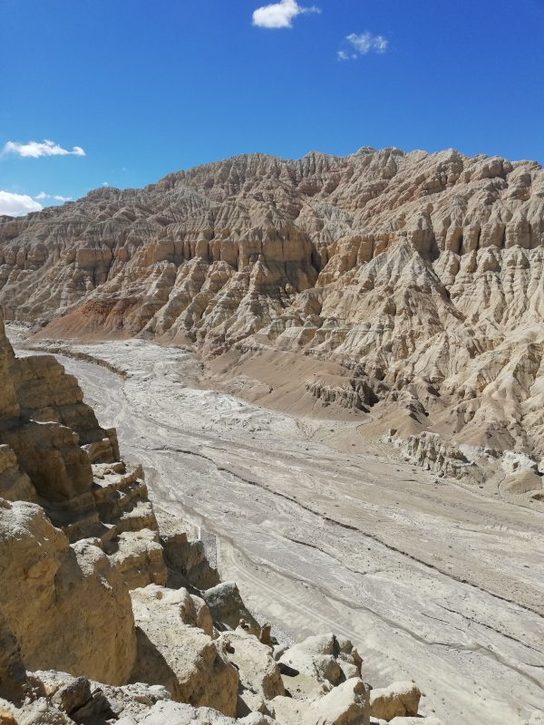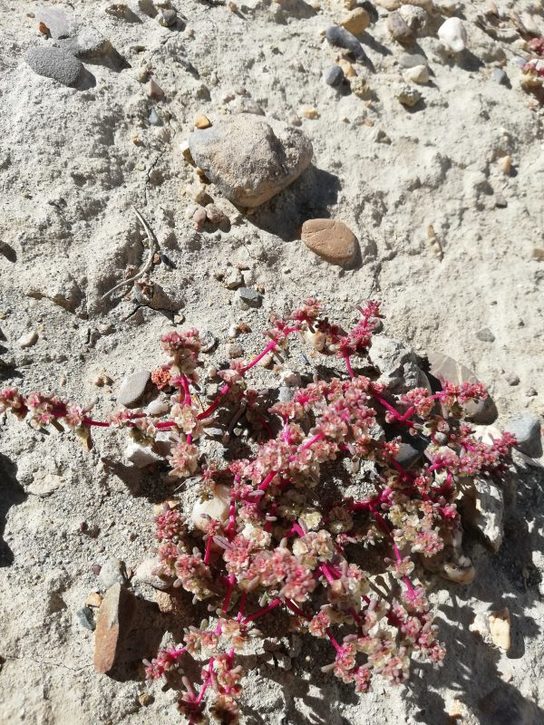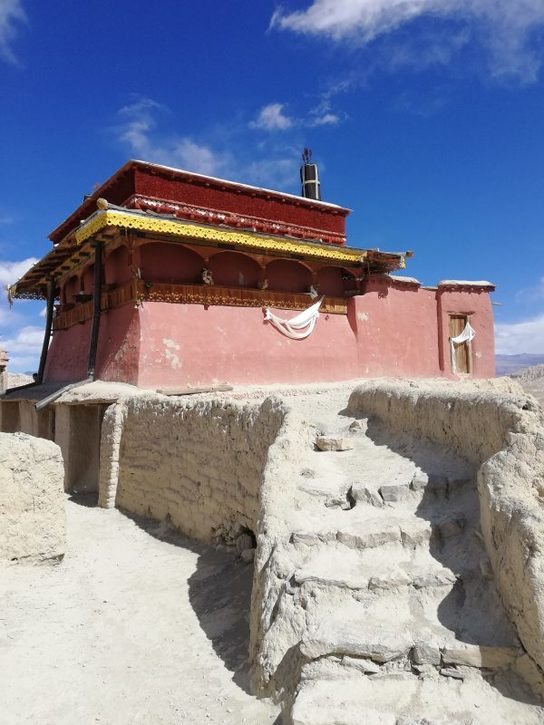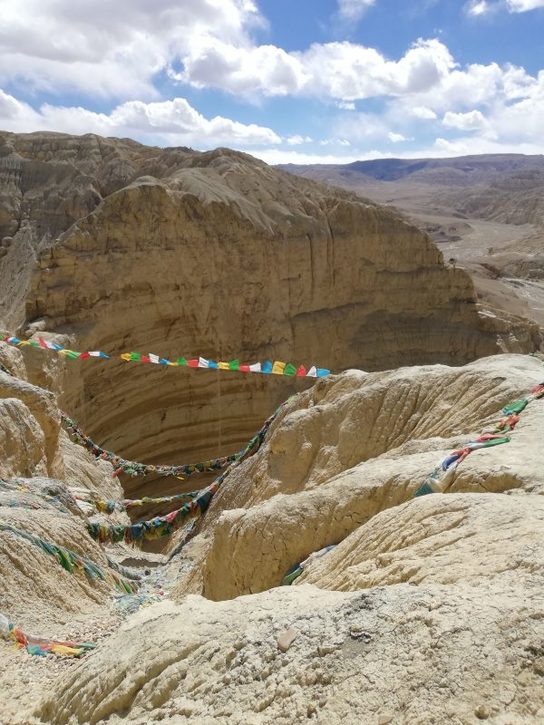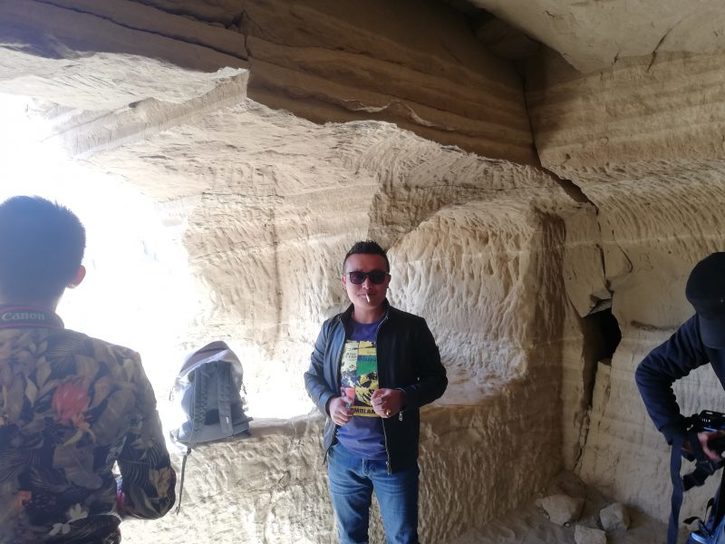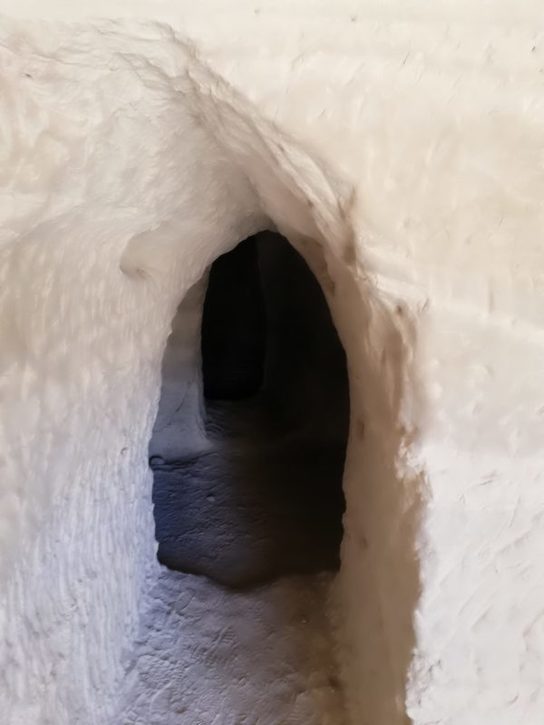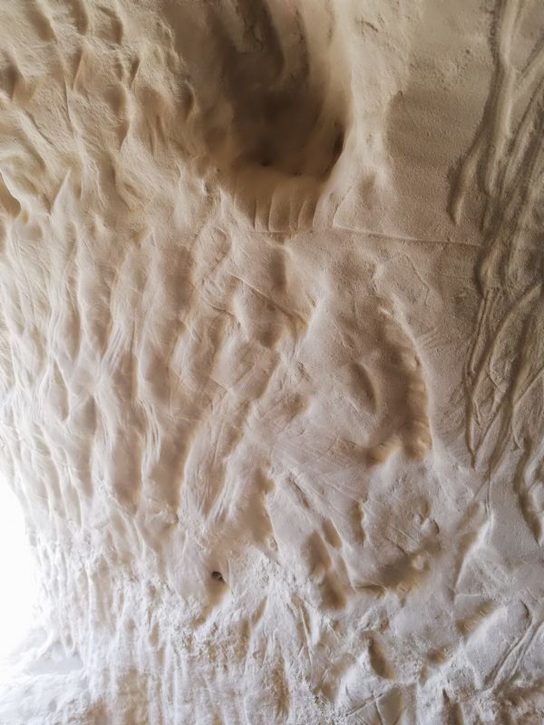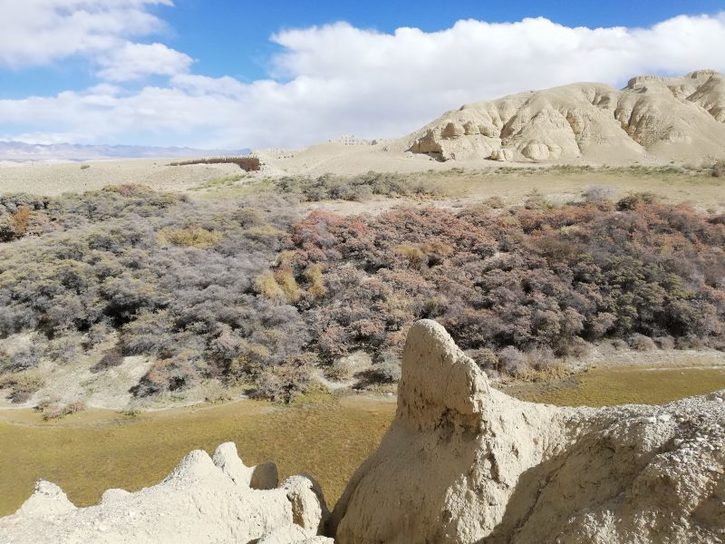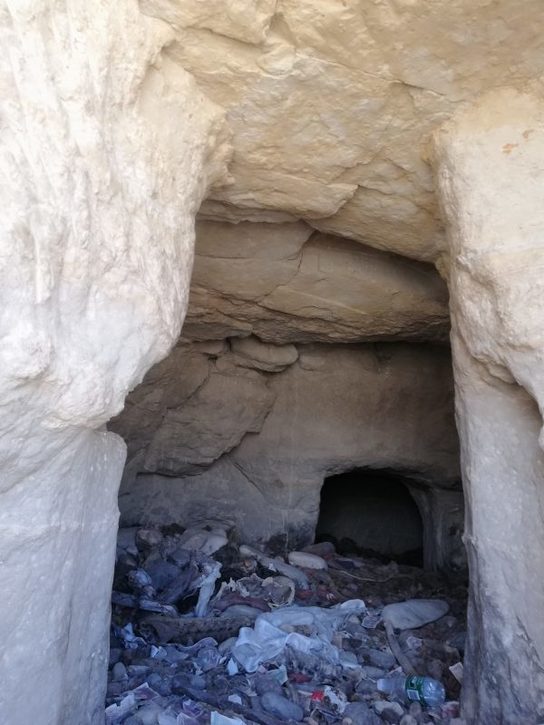China is such a country that, just when you think you have seen the most beautiful and impressive site, you see something even better. We drove about 30 kms from Dada to the ruins of Tsaparang, the capital of the Guge Kingdom, whose origins are shrouded in mystery but collapsed in the mid 17th century.
The civil wat between the two brothers was a mega-tragedy. The soldiers of the military prince fought to the bitter end and constructed a strong fortress to make a last stand. Bringing huge stones up from the bottom of the hill, they worked until the spines burst through their skin according to a contemporary record. Seeing their suffering, their prince surrendered, but it is not known what happened to him. There is a pitch-black tunnel leading to a cave in the side of the mountain from which he may have escaped. His soldiers had no such luck. They were entombed in caves; some reports say that they committed suicide in this way, but deep scratch marks in the rock suggest that they were trying to tunnel their way out, which means that they were entombed by their enemies. Sadly, the scratch marks we saw indicate that they were tunnelling into the mountain rather than out of it in the pitch black darkness. About 2 kms from the fortress there is a charnel cave where hundreds of decapitated skeletons were found. You can see into it and you can smell the dead flesh because the dryness of the place means that they haven’t rotted. There are hundreds of these caves but the exact number and their contents haven’t been researched. There is so much archaeological research going on in China and they haven’t got round to Tsaparang yet. There is still a fascinating story to be told.
What we do know is that the religious prince was then turned on by his Ladakh allies and he and his princess were thrown off the top of the highest building. Little more is known until 1625 when two Catholic priests from Goa crossed the Manas Pass from Ladakh and befriended the then ruler, who gave then the accolade of “Chief Lamas”. They built a Christian church there and in 1650 another at Rudok to the north. However the lamas were fed up with the Christians trying to cenvert the people, and called on Ladakh to overthrow the prince. This duly happened, Guge was absorbed into Ladakh and ceased to exist as an independent kingdom.
A German explorer at the beginning of the 20th century went to Tsaparang and found the cross of the Christian church lying among the ruins.
During the visit we met a group of absolutely charming Chinese students from Tianjin and also a couple of boys who had cycled from Chengdu. Lovely people.

